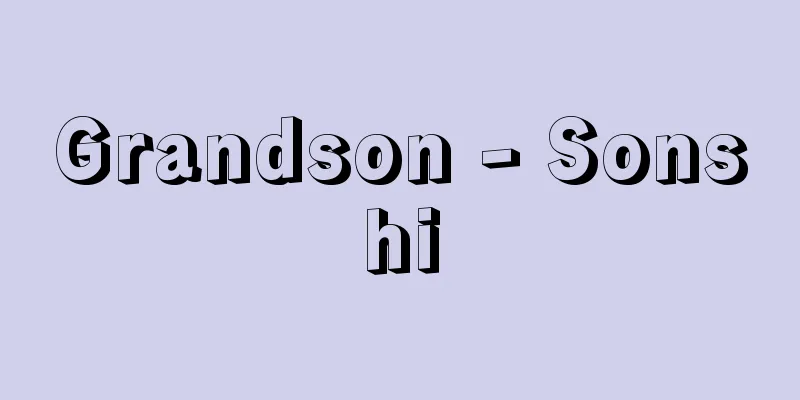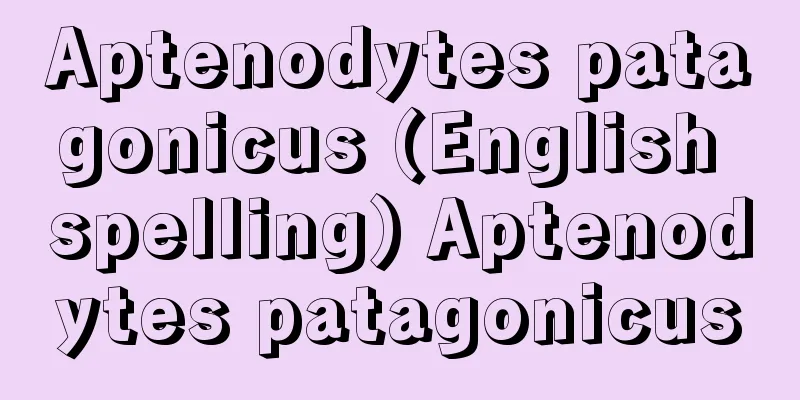Grandson - Sonshi

|
Date of birth and death unknown. Traditionally, it refers to the ancient Chinese military strategist Sun Wu (Sun Tzu), a general of the Wu state during the Spring and Autumn Period, or to the 13 books on military strategy written by him. Alternatively, it refers to Sun Bin (Sun Bin), a descendant of Sun Wu and a general of the Qi state during the Warring States Period (around 340 BCE), or to his writings. However, in 1972, bamboo slips of a military text excavated from a Han tomb in Yinqueshan (Linyi County, Shandong Province) estimated to date to the beginning of the 2nd century B.C. revealed that there were two versions of "The Art of War": the conventional "Sun Tzu" and "Sun Bin." Subsequent reports from the Chinese side showed that 305 bamboo slips of "Sun Tzu" (more than 2,300 characters) and 440 bamboo slips of "Sun Bin" (more than 11,000 characters) had been deciphered. The appearance of the mysterious military book "Sun Bin," which had been hidden except for its name in ancient books, not only proved the accuracy of the entries in the "Records of the Grand Historian" (biographies of Sun Tzu and Sun Bin) and the records in the "Arts and Literature" section of the "Book of Han" (82 chapters and nine volumes of illustrations of "The Art of War" by Wu Sun Tzu, and 89 chapters and four volumes of illustrations of "The Sun Tzu of Qi"), but also put an end to the debate over the authorship of "The Art of War." [Masao Shinoda December 14, 2015] The GrandsonThe original "The Art of War" is highly regarded as a classic among classics among military books, and consists of 13 chapters: "Plan," "Strategy," "Strategy," "Form," "Force," "Real and False," "Military Warfare," "Nine Changes," "March," "Terrain," "Nine Grounds," "Attack by Fire," and "Use." Famous phrases such as "If you know your enemy and know yourself, you will not be in danger in a hundred battles," and "Swift as the wind, quiet as a forest, ravaging like fire, motionless as a mountain" are well known, but this is a military book that comprehensively discusses strategy and tactics, and can be said to have a deep philosophical nature with a Taoist color. According to the "Records of the Grand Historian," the author, Sun Tzu, was a man of Qi and wrote 13 military books. He served King Helü of Wu (reigned 515-496 BC), defeated Chu in the west, and threatened Qi and Jin in the north, making his name known throughout the world. It is said that it was largely due to Sun Wu's power that King Wu was able to become the ruler of the various feudal lords. [Masao Shinoda December 14, 2015] "The Art of War" by Sun BinAccording to the deciphering and organization of the "Small Compilation of Bamboo Slips" by the Linyi Yinqueshan Han Tomb Excavation Research Team, the bamboo slips are divided into a total of 30 chapters, as follows: Chapter 1 - Pang Juan, (Ken'iou to see King Wei), Wei Wang Wen, Chen Ji to ask about Lei, Usurping Soldiers, Yue Zhan, Eight Battles, Earth Arms, Preparations, (Military Affairs), Usurping, Killing Officers, Ensuring Qi, Official One, and (Strengthening Soldiers). Part 2: Ten Battles, Ten Questions, A Summary, Guest Host's Share, Good Man, Five Names and Five Respects, Military Failure, A General's Righteousness, A General's Virtue, A General's Defeat, A General's Failure, A Castle for Men and Women, Five Times and Nine Captures, and Oddly Correct. According to the commentary, the titles in brackets are not in the original text and were added by the editor. Although this book was created more recently than the current version of "The Art of War," the writing style is old-fashioned and even primitive in parts. The content reflects the changes in the nature of warfare due to the transition of social conditions, with an emphasis on city sieges and positional battles, and is more concrete and practical than "The Art of War." Regarding the author, the Records of the Grand Historian states, "A man of Qi. A descendant of Sun Tzu. A pupil of Guiguzi. His fellow pupil Pang Juan (?-341 BC) was jealous of his outstanding talents, and deceived him, leading to him committing a crime and having both his legs amputated. He later fled to Qi and served King Wei (reigned 356-320 BC), where he defeated the Wei army through a scheme and forced Pang Juan to commit suicide. He passed down his military tactics to future generations." [Masao Shinoda December 14, 2015] "Murayama Yoshihiro (ed.), "Complete Commentary of the Chinese Classical Literature Series 4: Laozi, Zhuangzi, Liezi, Sunzi, and Wuzi" (1973, Heibonsha)" ▽ "Yamai Wang (ed.), "Complete Commentary of the Chinese Classical Literature Series 22: Sunzi and Wuzi" (1975, Shueisha)" ▽ "Murayama Futoshi (translated), "Sun Bin's Art of War" (1981, Tokuma Shoten)" ▽ "Kanaya Osamu (ed.), "Sunzi" (Iwanami Bunko)" ▽ "Sato Kenji (1962, Kazama Shobo/1980, Hara Shobo)" ▽ "Sato Kenji (1963, Kazama Shobo)" ▽ "Guo Huarao (ed.), "Current Translation of Sunzi with Annotations on the Song Edition of Sunzi by Eleven Families" (1961, Zhonghua Book Company)" [Reference] |Source: Shogakukan Encyclopedia Nipponica About Encyclopedia Nipponica Information | Legend |
|
生没年不詳。従来は、中国古代の兵法家で春秋時代の呉(ご)の将軍孫武(そんぶ)、またはその著作になる13編の兵法書をさす。あるいは孫武の子孫で戦国時代の斉(せい)の孫臏(そんぴん)(前340ころ)、またはその著書をいう。 ところが、1972年、銀雀山(ぎんじゃくざん)(山東省臨沂(りんぎ)県)の紀元前2世紀初頭のものと推定される漢墓から出土した兵書の竹簡によって、『孫子』には、在来の『孫子』と『孫臏』の2種類があったことが判明した。中国側のその後の報告によれば、『孫子』の竹簡305枚(2300余字)、『孫臏』の竹簡440枚(1万1000字以上)が解読されている。古書に名をとどめるのみで、姿を隠していた幻の兵書『孫臏』の出現は、『史記』の記載(孫武と孫臏の伝記)や『漢書(かんじょ)』「芸文志(げいもんし)」の記録(『呉孫子兵法』82編・図九巻、『斉孫子』89編・図四巻)の正しさを立証したばかりか、『孫子』の著者をめぐる論争にも終止符を打つことになった。 [篠田雅雄 2015年12月14日] 『孫子』在来の『孫子』は兵法書のなかでも古典中の古典と高く評価され、次の13編からなる。「計」「作戦」「謀攻」「形」「勢」「虚実」「軍争」「九変」「行軍」「地形」「九地」「火攻」「用間」。「彼を知り己を知らば百戦あやうからず」「その疾(はや)きこと風のごとく、その徐(しずか)なること林のごとく、侵掠(しんりゃく)すること火のごとく、動かざること山のごとし」などの名句は有名であるが、戦略・戦術について総合的に論じた兵法書で、道家的色彩を帯びた深い思想性をもつものといえよう。著者孫武については『史記』によれば、斉の人、兵法書13編を著すとある。呉王闔閭(こうりょ)(在位前515~前496)に仕え、西は楚(そ)を破り、北は斉、晋(しん)を脅かして、天下にその勇名をとどろかせた。呉王が諸侯の覇となりえたのも、孫武の力に負うところが多かったという。 [篠田雅雄 2015年12月14日] 『孫臏兵法』臨沂銀雀山漢墓発掘調査団の「竹簡整理小組」の解読、整理によれば、次のように、上下、全30編に分かれる。上編――擒龐涓(きんほうけん)、〔見威王(けんいおう)〕、威王問(いおうもん)、陳忌問塁(ちんきもんるい)、簒卒(さんそつ)、月戦(げっせん)、八陣(はちじん)、地葆(ちほう)、勢備(せいび)、〔兵情〕、行簒(こうさん)、殺士、延気、官一(かんいつ)、〔強兵〕。下編――十陣、十問、略甲、客主人分(かくしゅじんぶん)、善者、五名五恭(ごきょう)、〔兵失〕、将義、〔将徳〕、将敗、〔将失〕、〔雄牝城(ゆうひんじょう)〕、〔五度九奪(ごどきゅうだつ)〕、奇正。 解説によれば、〔 〕付きの編名は、原文にはなく整理者が補ったものである。この書は、現行の『孫子』より成立年代が新しいはずなのに、文体はかえって古めかしく、原始的とさえ感じさせる部分もある。内容は、社会状況の推移による戦争形態の変化を反映して、城市攻略、陣地戦に重点が置かれ、『孫子』に比べてより具体的であり、実際的である。 著者については、『史記』に、「斉の人。孫武の後裔(こうえい)。鬼谷子(きこくし)の弟子。同学の龐涓(ほうけん)(?―前341)にその優れた才能をそねまれ、欺かれて罪に陥(おと)され、両足を切断される。のち斉に逃れて威王(いおう)(在位前356〜前320)に仕え、謀(はかりごと)によって魏(ぎ)軍を破り、龐涓を自害させる。その兵法を後世に伝える」とある。 [篠田雅雄 2015年12月14日] 『村山吉広編『中国古典文学大系4 老子・荘子・列子・孫子・呉子』(1973・平凡社)』▽『山井湧編『全釈漢文大系22 孫子・呉子』(1975・集英社)』▽『村山孚訳『孫臏兵法』(1981・徳間書店)』▽『金谷治編『孫子』(岩波文庫)』▽『佐藤堅司著『孫子の思想史的研究』(1962・風間書房/1980・原書房)』▽『佐藤堅司著『孫子の体系的研究』(1963・風間書房)』▽『郭化若編・訳『孫子今訳 附「宋本十一家注孫子」』(1961・中華書局)』 [参照項目] |出典 小学館 日本大百科全書(ニッポニカ)日本大百科全書(ニッポニカ)について 情報 | 凡例 |
Recommend
Terebra maculata (English spelling)
…[Tadashige Nabe]. . … *Some of the terminology t...
Seasoning (food) - Enbai
...The main source of sourness is citric acid. In...
Buddhaghosa
…Years of birth and death unknown. Transliteratio...
Izumizaki [village] - Izumizaki
A village in Nishishirakawa District, southwest of...
Grivet monkey
...They are terrestrial and live widely in the sa...
Ultra
...In addition, the strict electoral system limit...
Fear of heights
A phobia. It is the fear of going up to high place...
Avoidance relationship
…It is found all over the world, but it usually a...
Akiruno [city] - Akiruno
A city in the mid-west of Tokyo. In 1995, Akigawa ...
New Drama - Shingeki
It is one of the new theatrical genres that devel...
Omega Centauri star cluster - Omega Centauri star cluster
NGC5139 is a globular cluster in the southern cons...
estoppel by deed
...This principle is used in cases where allowing...
Felicitas Julia
… [history] Lisbon is said to have originated as ...
Paleotext - Komonjogaku
Japan A large number of ancient documents from be...
Tuṣita (English spelling)
…One of the heavenly realms that appears in the B...









